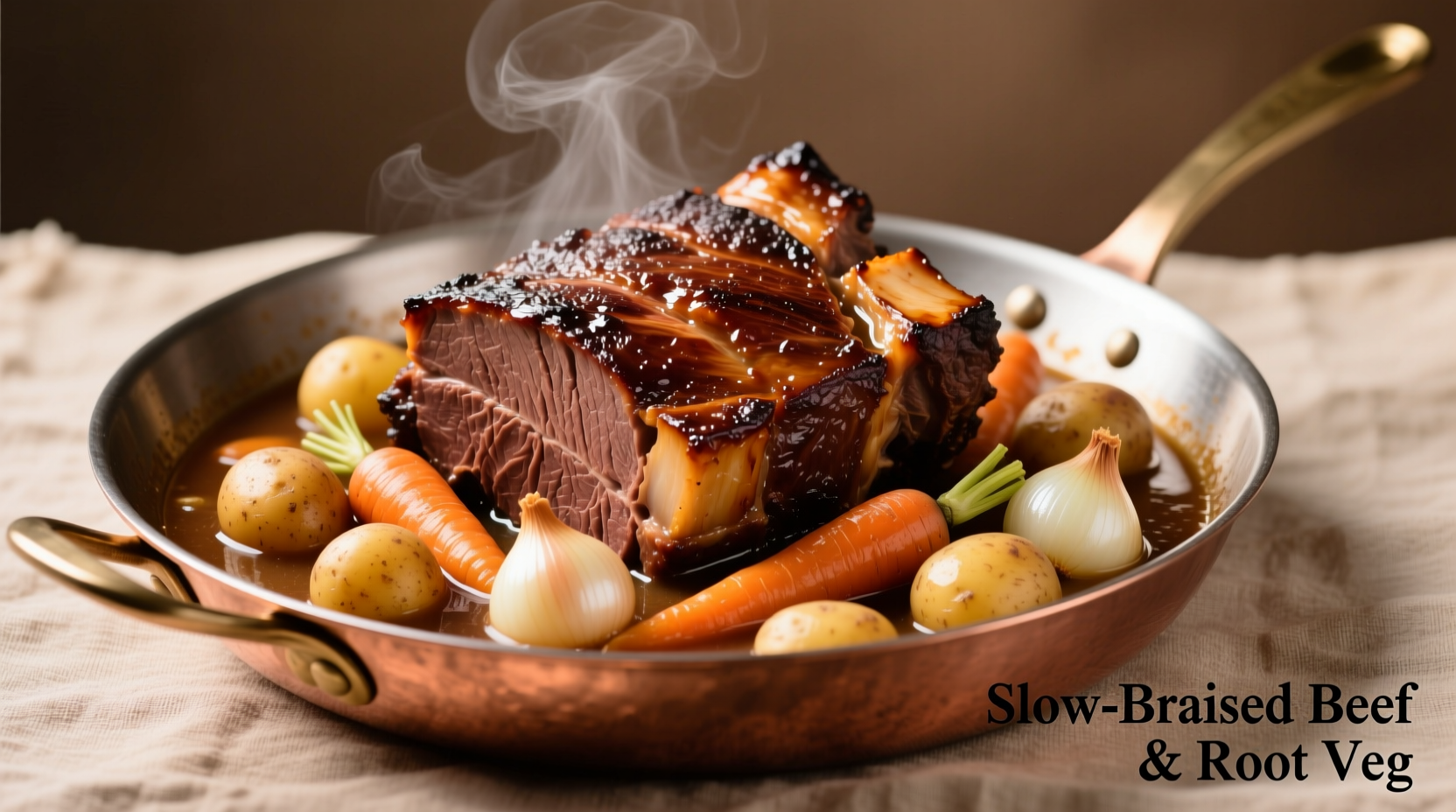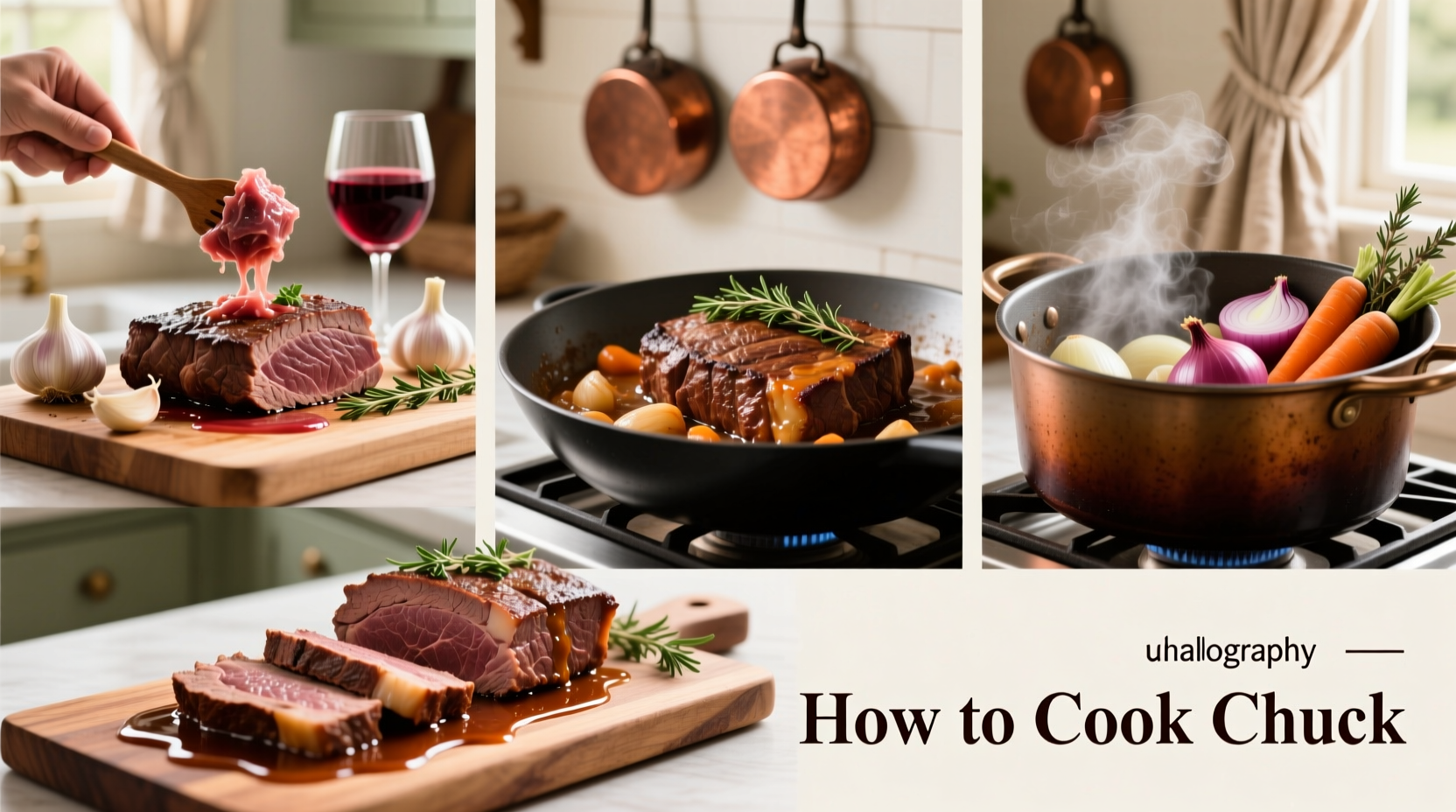Chuck roast requires slow, moist-heat cooking methods like braising or slow cooking for 3-4 hours at 300°F to transform its tough connective tissue into tender, flavorful meat. The ideal internal temperature is 195-205°F for perfect pull-apart tenderness.
Unlock the full potential of this affordable cut with our comprehensive guide to cooking chuck roast. Whether you're using a Dutch oven, slow cooker, or oven, we'll show you exactly how to transform this budget-friendly cut into a succulent centerpiece for any meal. Forget dry, tough results—master these techniques for fall-apart tender chuck roast every time.
Why Chuck Roast Needs Special Cooking Treatment
Chuck roast comes from the shoulder area of the cow, containing abundant connective tissue and marbling. This makes it incredibly flavorful but naturally tough when cooked improperly. The collagen in chuck roast needs prolonged exposure to moist heat to break down into gelatin, creating that signature melt-in-your-mouth texture.
According to the USDA Food Safety and Inspection Service, tougher cuts like chuck require cooking to higher internal temperatures (195-205°F) than steaks to achieve tenderness, as the collagen needs this temperature range to fully convert to gelatin.
Essential Preparation Steps for Perfect Chuck Roast
Before you start cooking, proper preparation makes all the difference:
- Pat dry thoroughly - Moisture prevents proper browning
- Season generously - Use coarse salt 1 hour before cooking for deeper flavor penetration
- Sear properly - Heat oil until shimmering, then sear all sides for 3-4 minutes per side
- Trim excess fat - Leave 1/4 inch for flavor but remove large chunks that won't render

Three Reliable Cooking Methods Compared
| Cooking Method | Time Required | Temperature | Best For |
|---|---|---|---|
| Slow Braise (Dutch Oven) | 3-4 hours | 300°F | Deep flavor development, restaurant-quality results |
| Slow Cooker | 8-10 hours | Low setting | Hands-off convenience, perfect for beginners |
| Oven Roast | 4-5 hours | 275°F | Crisp exterior with tender interior |
Mastering the Slow Braise Technique
This professional method delivers the most flavorful results. Follow these precise steps:
- Preheat oven to 300°F after searing your roast
- Add 2 cups liquid (beef broth, red wine, or combination) to Dutch oven
- Include aromatics: 1 onion, 3 carrots, 3 celery stalks, 4 garlic cloves
- Cover tightly with lid or foil
- Cook for 3 hours, then check tenderness
- Continue cooking in 30-minute increments until fork-tender
- Rest for 20 minutes before serving
The American Meat Science Association confirms that slow braising at low temperatures allows for optimal collagen breakdown while preserving moisture. Their research shows that cooking chuck roast below 300°F prevents the muscle fibers from seizing up, which happens at higher temperatures.
Avoid These Common Chuck Roast Mistakes
Even experienced cooks make these critical errors:
- Skipping the sear - Proper browning creates flavor through the Maillard reaction
- Using high heat - Causes toughening instead of tenderizing
- Not enough cooking time - Collagen needs 3+ hours to fully break down
- Cutting too soon - Resting allows juices to redistribute
- Using insufficient liquid - Maintain at least 1/2 coverage throughout cooking
Serving Suggestions and Flavor Variations
Elevate your chuck roast with these professional finishing touches:
- Classic pot roast - Add potatoes and carrots during last 90 minutes
- Asian-inspired - Use ginger, star anise, and soy sauce in braising liquid
- Mexican-style - Add chipotle peppers and cumin for barbacoa
- Italian version - Use tomatoes, red wine, and rosemary
For the best results when learning how to cook chuck roast properly, always use a meat thermometer to verify doneness. The ideal internal temperature range of 195-205°F ensures complete collagen conversion without drying out the meat. Remember that chuck roast continues cooking while resting, so remove it from heat when it reaches 190°F.
Frequently Asked Questions
Can I cook chuck roast like a steak?
No—chuck roast's high connective tissue content requires slow, moist-heat cooking. Attempting to cook it like a steak will result in tough, chewy meat.
Why is my chuck roast still tough after cooking?
Insufficient cooking time is the most common issue. Collagen needs 3+ hours at low temperatures to fully break down into gelatin. Check that your oven temperature is accurate.
What's the best liquid for braising chuck roast?
A combination of beef broth and red wine creates the richest flavor profile, but beer, tomato juice, or even water with additional seasonings work well for how to cook chuck roast on a budget.
Can I overcook chuck roast?
Yes—while chuck roast is forgiving, cooking beyond 210°F for extended periods can cause the muscle fibers to dry out after the collagen has fully converted.
How should I store leftovers?
Store cooled chuck roast in its cooking liquid for maximum moisture retention. Consume within 4 days or freeze for up to 3 months.











 浙公网安备
33010002000092号
浙公网安备
33010002000092号 浙B2-20120091-4
浙B2-20120091-4